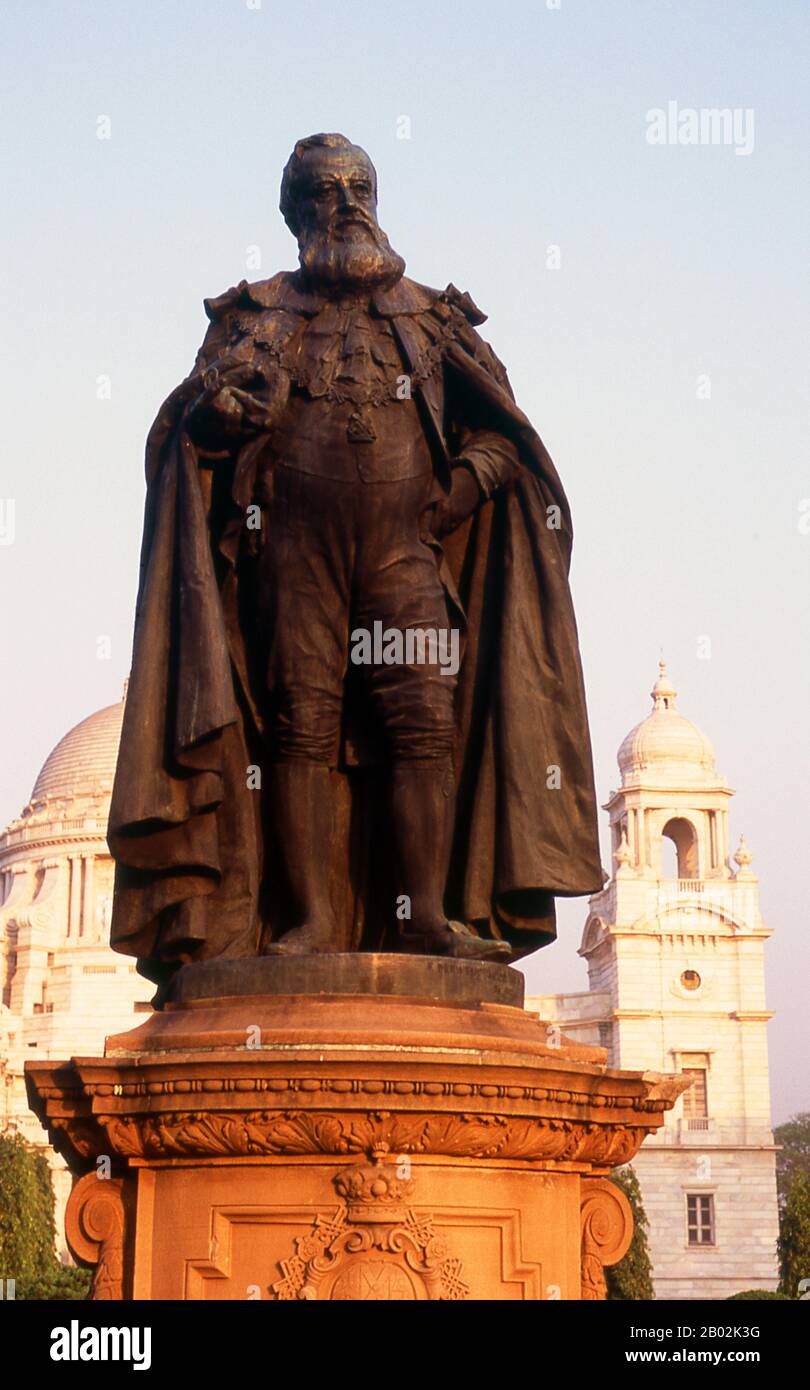George Frederick Samuel Robinson, 1st Marquess of Ripon (24 October 1827 – 9 July 1909), was a British politician who served in every Liberal cabinet from 1861 until the year before his death, which took place forty-eight years later. George Robinson was appointed Viceroy of India by Prime Minister, William Gladstone in 1880 and he held the office until 1884. During his time in India, Ripon introduced legislation that would have granted native Indians more legal rights, including the right of Indian judges to judge Europeans in court. Though progressive in its intent, this legislation was gut

Image details
Contributor:
CPA Media Pte Ltd / Alamy Stock PhotoImage ID:
2B02K3GFile size:
42.2 MB (1.1 MB Compressed download)Releases:
Model - no | Property - noDo I need a release?Dimensions:
3033 x 4862 px | 25.7 x 41.2 cm | 10.1 x 16.2 inches | 300dpiDate taken:
14 August 2014Photographer:
Pictures From HistoryMore information:
This image could have imperfections as it’s either historical or reportage.
George Frederick Samuel Robinson, 1st Marquess of Ripon (24 October 1827 – 9 July 1909), was a British politician who served in every Liberal cabinet from 1861 until the year before his death, which took place forty-eight years later. George Robinson was appointed Viceroy of India by Prime Minister, William Gladstone in 1880 and he held the office until 1884. During his time in India, Ripon introduced legislation that would have granted native Indians more legal rights, including the right of Indian judges to judge Europeans in court. Though progressive in its intent, this legislation was gutted by the British Parliament which did not want to lose its legal superiority. The tax records of Mughal Emperor Akbar (1584–1598) as well as the work of a 15th century Bengali poet, Bipradaas, both mention a settlement named Kalikata (thought to mean ‘Steps of Kali’ for the Hindu goddess Kali) from which the name Calcutta is believed to derive. In 1690 Job Charnock, an agent of the East India Company, founded the first modern settlement in this location. In 1698 the company purchased the three villages of Sutanuti, Kolikata and Gobindapur. In 1727 the Calcutta Municipal Corporation was formed and the city’s first mayor was appointed. In 1756 the Nawab of Bengal, Siraj ud-Daulah, seized Calcutta and renamed the city Alinagar. He lost control of the city within a year and Calcutta was transferred back to British control. In 1772 Calcutta became the capital of British India on the orders of Governor Warren Hastings. In 1912 the capital was transferred to New Delhi while Calcutta remained the capital of Bengal. Since independence and partition it has remained the capital and chief city of Indian West Bengal.